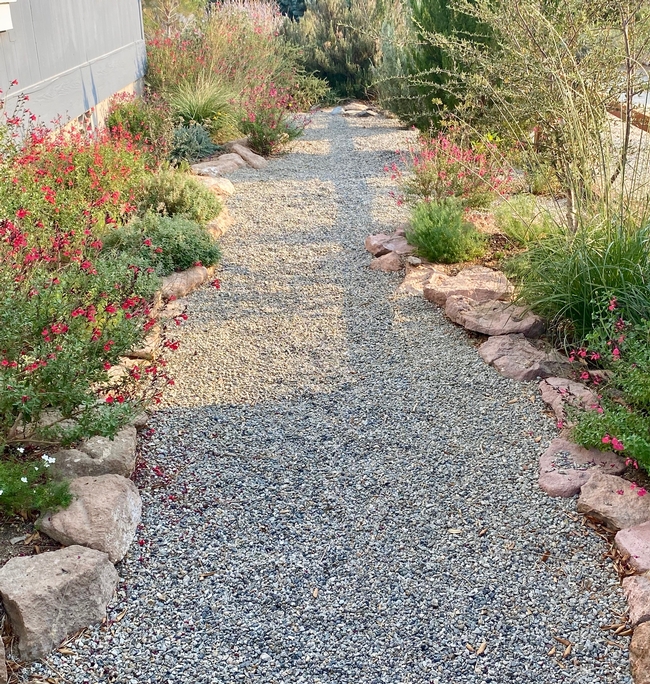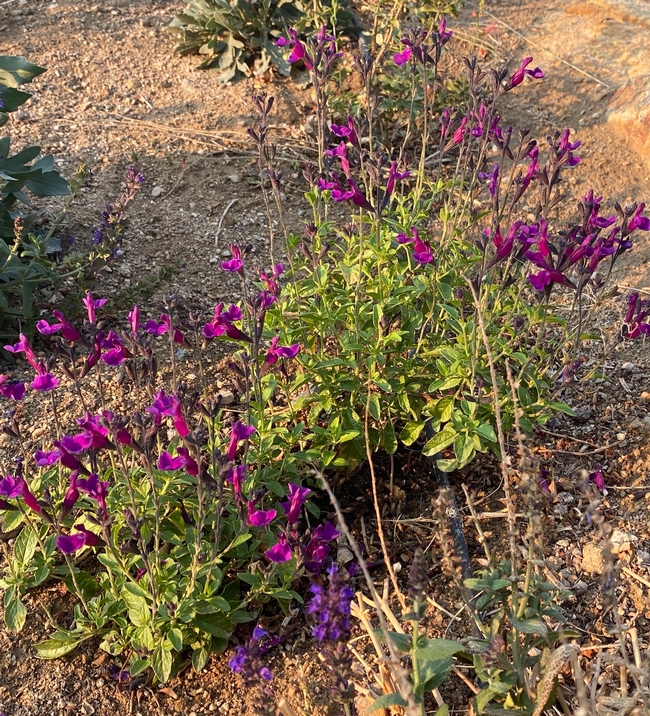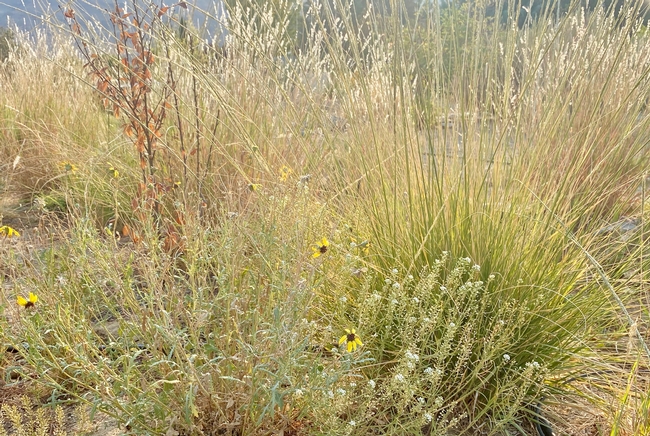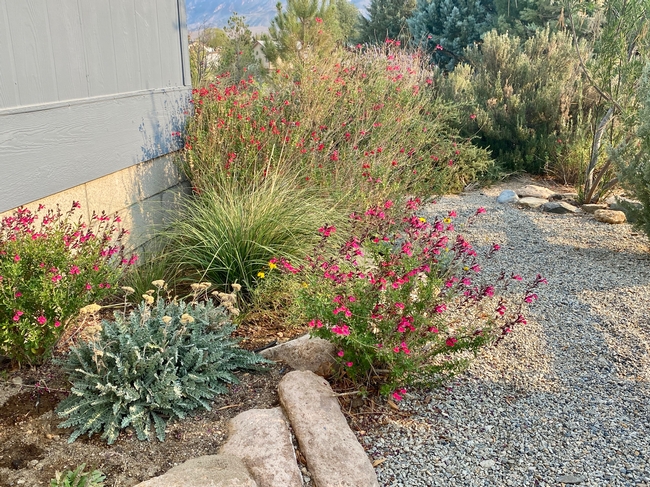Though it's been hard to tell with the fire/weather we're having during this craziest of all years—September felt pretty summery—the plants in my garden have been telling me for a number of weeks now that summer is finally ending. The mornings are cooler, the days are shorter, and the garden is responding.
Salvia greggii is a star in the garden all year, but their show this time of year has given them their common name—autumn salvias. And so many colors! Purples and other shades are becoming easier to find, expanding the palette beyond the pinks and reds. The New Mexican sunflower (Helianthus maximiliani) is finally showing that its bloom is worth waiting for. The spindly but strong stems looked so close to withered during the long, hot summer it hardly seemed worth the water they cried out for. The Gaillardias, who rarely seem to miss a beat, are gloriously responding to the more moderate temperatures and longer nights fall brings to our hemisphere.
The grasses have been recast from supporting actors to leading roles. The light of the sun, now lower on the horizon, suffuses the flower stalks of silver beardgrass (Bothriochloa laguroides), deergrass and its smaller cousin (Muhlenbergia rigens and M. dubia), and blue grama grass (Bouteloua gracilis and its named variety ‘Blonde Ambition' are both fabulous). And as the warm season fades, they will begin to shine more brightly. No group of plants can compare to the grasses in terms of solid year-round interest. Yes, they don't look great after their annual late-spring haircut, but by the time you cut them back, they should be very actively growing, so the awkward phase doesn't last long! After that, they provide a great green backdrop for the bloomers, waiting for their chance in the spotlight. Fall and winter is their time!
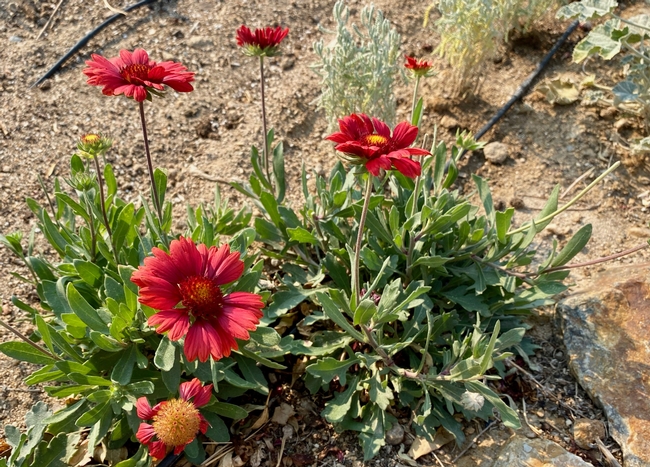
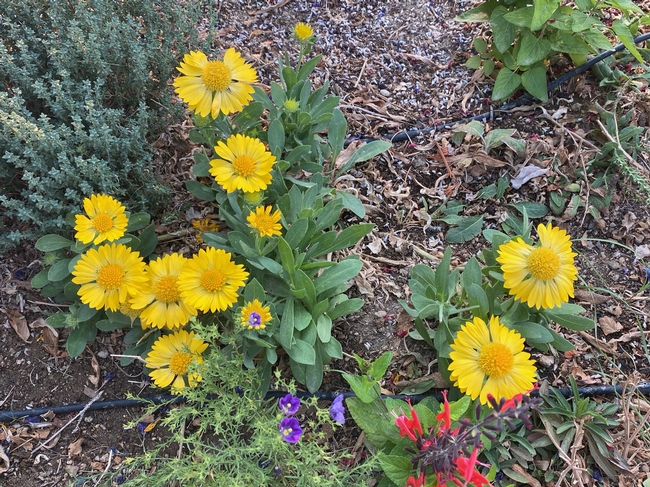
Some of your new plants may not look too happy, but don't get discouraged—the transplant success rate for many natives is not good, so just know that you are doing the best you can. Spring is normally the time natives look best, so focus on how gratifying it will be when you see fresh, green leaves after a long winter's sleep!
These are some of the plants I am moving right now in my yard. Not all of them are Inyo County or even California natives, but all can deal with the tough environment the Owens Valley serves up:
- Santolina
- Salvias - S. greggii and S. clevelanii (marginal this far north, but worth the extra care!
- Germander
- Goldenrod
- Gaillardias
- Yarrows
- Young native grasses that are not yet blooming
- Pine muhly
- Deergrass
- Grama grasses
Though I buy a lot of plants locally (I found goldenrod and a lot of other great stuff at High Country Lumber last week), other than the Native Plant Society's August sale, it can be tough to find native plants here, so I am always on the lookout for sources for plants when I travel. I've listed a few of my recent favorites below. But the best thing to do is to develop your own nursery stock. Watch this space for an article on that soon!
Online (links to these from plants above)
- Mountain Valley Growers
- High Country Gardens
- Annie's Annuals
- Digging Dog Nursery
- Plants of the Southwest (seeds only)
In Person
- Tree of Life Nursery, San Juan Capistrano
- Theodore Payne, Sunland
- Rancho Santa Ana Botanical Garden, Claremont
- Miner's Ace Hardware, Morro Bay (and other locations), carries plants from Annie's Annuals and The Growing Grounds
Links and sources posted are for information purposes. No UC endorsement is implied or intended.
